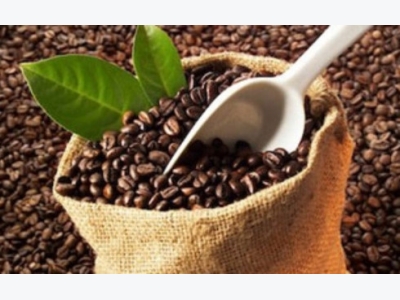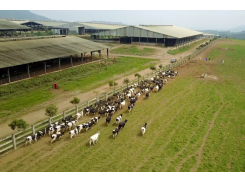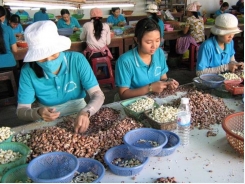Coffee varieties under the microscope amid lower quality harvest

The yields and quality of the fiscal year October 1, 2016-September 30, 2017 coffee crop is down, said the Vietnam Coffee and Cocoa Association, in its latest preliminary forecast.
Nguyen Nam Hai, deputy chair of the Association, said it now expects coffee output for this year’s crop to touch approximately 1.4 million tons, which would be slightly below the yield of the last fiscal year crop.
Speaking at a recent forum in Ho Chi Minh City, Mr Hai noted that this year the weather is more favourable but the older less productive trees on many plantations mixed with the negatives of intercropping is holding production down.
Coffee prices are also down again this year due to the quality being lower than optimal, said Mr Hai. The fiscal year 2015/2016 crop experienced a 6% decrease in the sales price from 2014/2015.
Much, but not all, of this year’s crop is forecast to experience a similar drop due to continued quality concerns.
He said the varieties used by coffee growers need to be looked at more closely and some changes made.
There are more than 100 species of coffee trees, but only two – Arabica and Robusta – produce beans used to make beverages. Vietnam is the globe’s largest producer of Robusta, which grows in the country’s flat lands, is cheaper to grow, tastes more bitter, has more caffeine, and is less refined.
Robusta is used primarily in cheaper or instant coffees, whereas chains like Starbucks only buy Arabica, a species that evolved in the Ethiopian highlands and made its way by trade to the Middle East.
In some limited cases, Robusta is blended with higher quality arabica and used in espressos or for brewed blends.
Major European coffee buyers such as Nestle report they are struggling to obtain supplies of premium Robusta beans, claiming that this year’s crop coming out of Vietnam is musty and bitter because of having been soaked last autumn by heavy rains during the harvest, when farmers laid them out to dry.
The weather damage can also be seen in the colour -- more beans than usual are a brown or black hue rather than the typical and more desirable pale green colour of raw coffee.
Nestle, the world's largest coffee company, has been hit particularly hard, traders said, since it has also committed to buying only coffee that meets the voluntary Common Code for the Coffee Community, known as the 4C sustainability standards.
Sourcing 4C coffee has been more difficult this year due to roughly 20% lower production in Vietnam, as well as a second poor crop in Brazil, the globe’s second largest Robusta grower.
One trader said Nestle typically uses one quarter of Vietnamese Robusta coffee output each year.
While 4C is a widely used benchmark, only about 29% – 2.6 million tons in 2015 according to the Global Coffee Platform – of coffee grown globally meets Nestle specifications. Most 4C Robusta comes from Vietnam.
The bulk of 4C is Arabica coffee, typically used in premium blends, from countries such as Brazil and Colombia.
Indonesia, the world's third largest Robusta producer, grows some 4C coffee, but traders said it usually falls short of the Nestle taste test.
For now, quality issues have mostly affected companies that buy on taste rather than the look of Robusta beans and the coffee shunned by Nestle is expected to easily find a home and unlikely to be discounted.
The low-grade quality of the remaining stock in Vietnam is causing concern, as is the volume farmers and middlemen are holding at this point in the season. Traders estimated just 20-30% remains in the country, compared with 45-50% in a typical year.
Focus is also on discoloured beans, which some dealers say could make up 8 to 10% of the total crop. Traders say more than 20% of the remaining crop in Vietnam could be black beans, which affect taste and may have to be blended with the next crop.
Price differentials have not yet shifted dramatically, but the discount for lower quality beans suggests oversupply; grade 3 is trading about US$150-US$200 a ton below Grade 2 compared with about US$100 previously.
The longer we go, the more we realize we've drawn down the good coffee in Vietnam and only the lower problem quality coffee is remaining, said a third trader.
Related news
Tools

Phối trộn thức ăn chăn nuôi

Pha dung dịch thủy canh

Định mức cho tôm ăn

Phối trộn phân bón NPK

Xác định tỷ lệ tôm sống

Chuyển đổi đơn vị phân bón

Xác định công suất sục khí

Chuyển đổi đơn vị tôm

Tính diện tích nhà kính

Tính thể tích ao



 Vietnam, Mozambique discuss promoting agricultural ties
Vietnam, Mozambique discuss promoting agricultural ties  General Department of Vietnam Customs handles obstacles of…
General Department of Vietnam Customs handles obstacles of…